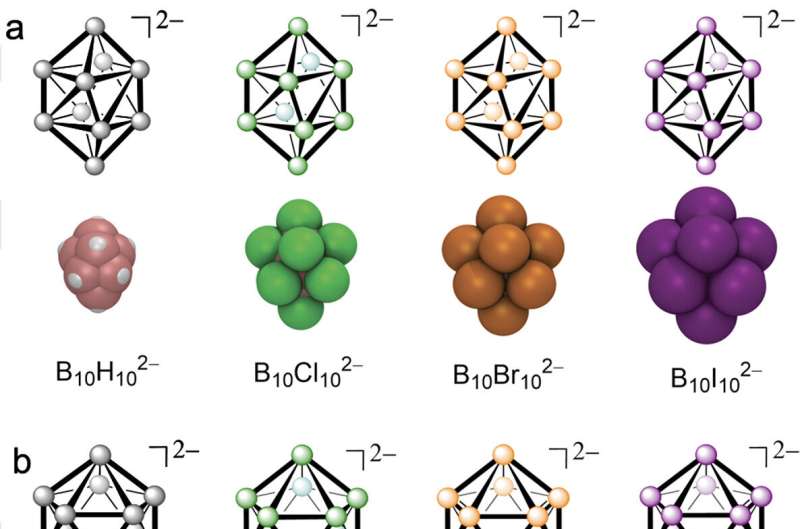This article has been reviewed according to Science X's editorial process and policies. Editors have highlighted the following attributes while ensuring the content's credibility:
fact-checked
peer-reviewed publication
proofread
First set of rational design principles for chaotropic membrane transporters

The challenge of internalizing impermeable molecules into cells persists in drug development, particularly concerning water-soluble bioactive compounds that cannot diffuse across the cell membrane. To overcome this problem, various artificial transporters, including polymers, lipids, and cationic penetrating peptides, have been engineered.
To date, these carriers have predominantly relied on amphiphilicity as the key property enabling them to cross the lipid bilayer. However, these transporters often encounter limitations due to intrinsic characteristics of amphiphilic molecules. For instance, their detergent-like behavior can induce cell membrane damage, leading to toxicity issues, and their tendency to aggregate may restrict their utility at higher concentrations.
Recently, thanks to a collaboration between the group of Prof. Javier Montenegro from the Centre for Research in Biological Chemistry and Molecular Materials (CiQUS, USC) and the group of Prof. Werner M. Nau from Constructor University (Bremen, Germany), a novel approach to delivering hydrophilic molecules across membranes has emerged, leveraging their supramolecular association with superchaotropic boron clusters.
Unlike the conventional mechanism observed with amphiphilic molecules, transport facilitated by perhalogenated closo-dodecaborates operates through the chaotropic effect rather than amphiphilic activation. This chaotropic membrane transport exhibits an enthalpy-driven signature, different from the one observed in the classical hydrophobic effect, attributed to dehydration effects and dispersion interactions.
The study published in Angewandte Chemie International Edition by researchers from CiQUS (USC), Constructor University (Bremen, Germany), and the Czech Academy of Sciences (Řež, Czech Republic) advances the understanding of the structural features of boron cluster carriers and establishes the first set of rational design principles for chaotropic membrane transporters.
In fact, the transport efficiency of this new class of cluster carriers depends on a careful balance between their affinity to membranes and cargo, which varies with their chaotropicity. However, the structure-activity parameters that define chaotropic transport still had to be elucidated.
This newly published study investigates the modulation of chaotropic transport by decoupling the halogen composition from the boron core size. For this purpose, two groups of globular boron clusters have been considered: the decaborate (B10X102−) and dodecaborate (B12X122−) series, with X = H, Cl, Br, I. These sets present different number of boron atoms in the core, respectively 10 and 12, and hence, each homologue cluster pair bears the same type of substituent but presents different size and geometry.
In this way it was possible to decouple the effect of cluster size and polarizability from the nature of the halogen substituent itself.
The membrane-lytic properties, cellular toxicity, and transport efficiency with different hydrophilic peptide model cargos were investigated for each cluster carrier. Vesicle and cell assays showed that, as a rule, high chaotropicity, cluster size, and polarizability resulted in higher affinity constants with the transported cargo molecules, in more efficient membrane transport in both vesicles and cells, but also in higher membrane-lytic propensity and cellular toxicity, likely due to too strong interactions with biomembranes.
Accordingly, it was demonstrated that there is a window of carrier utility, which is reached for an intermediary cluster size.
This work provides a blueprint for the design and implementation of chaotropic clusters and their formulations with potential membrane transporting capabilities, by demonstrating that the size and polarizability of dianionic borate cluster carriers, but not their chemical composition, are the fundamental parameters that govern chaotropic membrane transport
More information: Giulia Salluce et al, Size and Polarizability of Boron Cluster Carriers Modulate Chaotropic Membrane Transport, Angewandte Chemie International Edition (2024). DOI: 10.1002/anie.202404286
Journal information: Angewandte Chemie International Edition
Provided by Center for Research in Biological Chemistry and Molecular Materials (CiQUS)



















